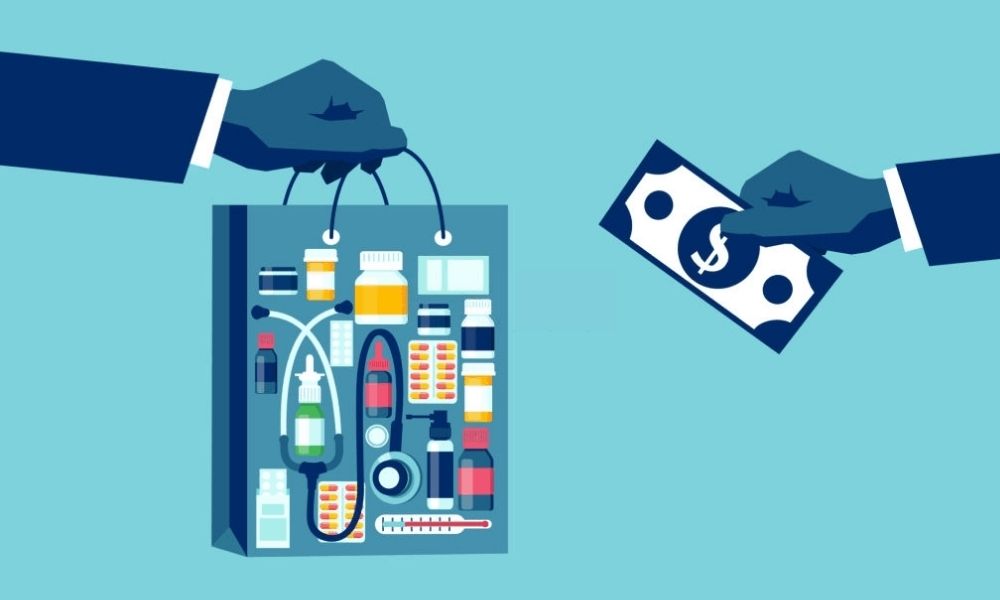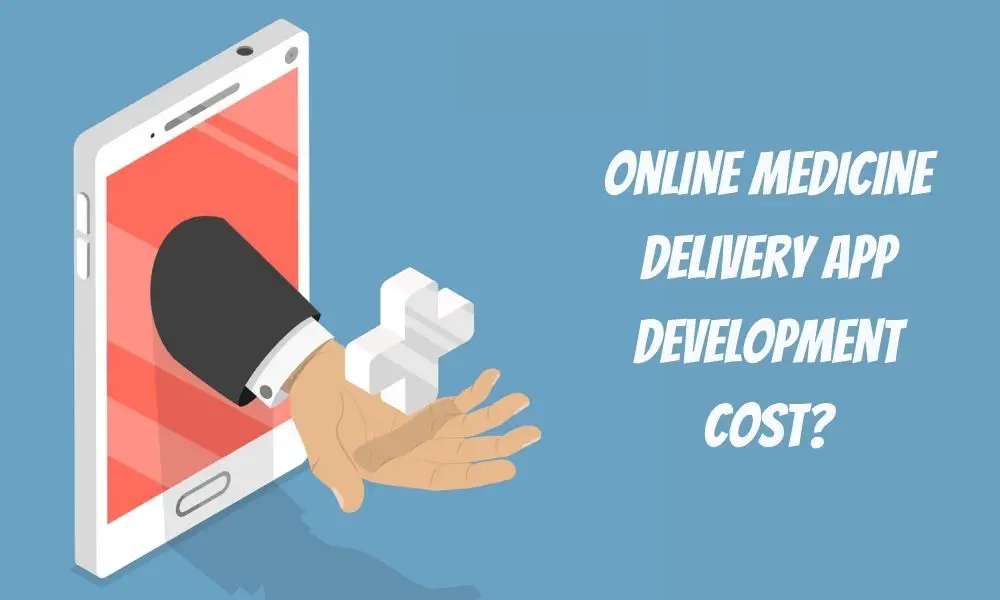Medicine delivery apps have taken the world by storm with their advantages. The past two years shifted the course of events in traditional shopping and customer behavior. Simultaneously, the healthcare segment is slowly but steadily moving to digitization, taking the services closer to the patients. Medicine delivery is another category of the industry with great potential.
Mobile technologies and online business models are now creating a new environment for patients cutting the necessity of going to the hospitals and pharmacies. With industry expansion, it is wise to think of building a medicine delivery app.
Why Should You Create a Medicine Delivery App?
Medicine delivery systems and medicine delivery apps’ market registers stable growth year by year. In 2021 it was valued at $49,43 billion, and by 2026, the segment is predicted to reach $107.5 billion at a CAGR of 16,8%. The skyrocketing numbers are primarily the result of the pandemic and post-pandemic behavior switch that will be the new normal.
This convenient solution of searching and ordering prescription drugs tends to increase trust among consumers and become as common as online shopping. 64% of US customers already feel confident using medicine delivery apps.
See Also: How to Create a Free Music App like Spotify?
What Are the Benefits of Medicine Delivery Apps?
The idea of any technological innovation is to make life more comfortable. Aside from being a profitable segment for investments, delivery apps are enhanced with all the features to make shopping simple and secure.
- Price comparison: The data of delivery apps is constantly updated with new products and prices. The drugs are presented with complete drug descriptions and pricing to be compared within the app or other platforms.
- Privacy: Shopping online is private. The personal data and user information are encrypted, making online shopping safe.
- Time and travel cost savings: Online shops are all about comfort shopping online with your phone without leaving the house. It saves time and money spent on the road and gives all the options to order medicine for patients with limited mobility.
- Better chronic disease management: Medicine delivery apps are best for ordering 90-day supplies instead of 30-day supplies available offline. For long-term pharmaceutical control, medicine delivery apps can become a lifesaver.
- Automatic refills: Patients’ data, saved on the app, is a valuable asset for the medicine delivery service that takes care of users and provides automatic refills and payments.
Also Read: IBM Watson Media Alternatives | Best OTT App Builders
How Much Does It Cost to Develop an Online Medicine Delivery App?
As per industry experts, an online medicine delivery app development may cost around $45,000 – $130,000 (simple to complex app) for single and multiple platforms. Like any other app development, building a medicine app is a process that takes time and resources. The cost of development depends on the tech stack and the app complexity.

1. Features and Functionality
The first fact that affects the price of a medicine delivery app is the features of the app. Advanced features and third-party APIs increase the cost and time of app development. Some of the advanced features of medicine delivery app may include but are not limited to the following:
- Multiple languages
- Cloud storage
- Lab search
- Consultation
- Document upload
New mobile technologies like Artificial Intelligence, AR & VR are penetrating the industry, creating better user experience and engagement. Those technologies may also affect the final cost.
2. Development Platforms
In the perfect scenario, the application should be available on both Android and iOS. Developing two separate native apps is expensive and time-consuming. For each platform, the development process differs, requiring expertise and skills.
3. App Development Team
The process and final project entirely depend on the knowledge and skills of the development team. There are hundreds of directories, including top development companies around the world. Depending on the location of the development company, the rates may differ dramatically. The lowest rates are offered by freelancers and agencies in India and Indonesia, offering $40-$80 per hour. At the same time, European-based companies and US agencies may charge up to $250 for an hour.
4. Development Time
The development time is the final element that decides the price of the medicine delivery app development. The time also includes initial analysis and market research, building customer journey map, defining project perspectives, actual app development, testing, and deployment. The more complex is the design and functionality of the app, the more time is needed for development.
Recommended: How Do You Develop a Financial App?
Must-Have Features of a Medicine Delivery App
The user experience with apps depends on their functionalities and features. The medicine delivery app is all about integrated APIs and features ensuring smooth operation, payment and delivery. So, what are the essential features to make medicine delivery apps valuable?
Since we are talking about a medicine delivery app, it is initially divided into three parts for customers, pharmacy, and a back-end admin panel to control the processes.
| Customer Panel | Pharmacy Panel | Admin Panel |
| Customer registration and authorization | A user interface to register new pharmacy | Dashboard to view and verify customer requests |
| Profile managing and editing | Interface to add new products and manage orders | The payment gateway for in-app purchases |
| Uploading prescriptions | Order notifications | Real-time analytics |
| Medicine search by name and other details | Digital prescription upload | Tracking system to track order delivery |
| Adding products to the card | Processing direct payments | GPS navigation to suggest the best routes for delivery |
| Online payment through in-app payment options | Analytics to real insights of the purchases and business performance | Daily tracking the earnings |
| Order history to easily repeat previous orders | Push notifications for customer retention | CRM system to support customer interactions24/7 customer support |
| Order tracking | ||
| Offers and discounts |
Advanced features of an app will make it more user-friendly and help better promote it on the market. The functionality of Artificial Intelligence can make delivery apps smart and flexible, learning user behavior and adopting his choices.
- Chatbot integration: An AI-based chatbot is a great option to increase customer interaction by providing on-demand information anytime required.
- Voice search: Navigation through voice is an innovation already used in most apps to give users mobility and freedom.
- In-app camera: This feature may be used rarely, but it gives users additional options to search products with photos.
Technology Stack
For the success of a medicine delivery app, the back-end architecture should be solid and based on modern technologies. Tech stack guarantees smooth operation of the app with the mobile OS. The app requires the development of a front-end and back-end and integrations of APIs.
You May Like: How 5G Will Change the Smartphone Experience?
Front-end is what the user sees on his side. The tech stack of a medicine delivery app is as follows:
| iOS | Android | |
| Programming language | Objective C, Swift | Java, Kotlin |
| IDE | AppCode, Xcode | Android Studio |
| Development OS | Mac OS X | Mac OS, Ubuntu |
| SDK | Cocoa Touch, iOS SDK | Android SDK |
The back-end is a server-side of a product responsible for all the operations within the app. Here is a list of technologies that can be used for the back-end.
| Programming language | Java, Python, PHP, Ruby, etc. |
| Web frameworks | Flutter, Laravel, Ruby on Rails, Symphony, etc. |
| Database servers | PostgreSQL, MySQL |
| Web servers | Apache, Nginx |
| Cloud server platforms | Amazon Web Services |
API protocol ensures the interaction of front-end and back-end as well as integrates the app with third-party services.
| Service | Integration |
| Payment gateways | PayPal, ApplePay, GooglePay, Braintree, etc. |
| Social media | Facebook, Instagram, Twitter, etc. |
| Analytics tools | Google Analytics, MixPanel, etc. |
| Navigation | Google Maps, Google Places |
| Email marketing | Twilio, MailChimp, SendGrid |
| Storage | Cloud Storage, Storm on Demand API |
See Also: How Many Companies Use React Native?
How to Make Money with a Medicine Delivery App

Creating and deploying a great app on the market is half the job. To generate revenue, the application should be a part of a business plan and have marketing strategies to make money.
- Commissions: The first business model to earn with a medicine delivery app is commissions from registered pharmacies. For providing an online platform for promoting and selling products, pharmacies, in return, are paying commission to the app.
- Promoting products: The featured listing offered on the shopping page is a way to promote several products and provide extra visibility. The company owning the products pays the app for displaying the product.
- Offer advertisement: Another working model to make money on medicine delivery apps is collaborating with other companies and displaying ads in the app.
Related: What Impact Will the IoT Have on Healthcare Sector?
Conclusion
The process of creating a medicine delivery app is much more than building the front-end and back-end. The project goes through several mandatory stages. The journey from idea to execution may take months of research and planning. Here is the plan for starting with a medicine delivery app.
Conduct Market Research and Analysis
Before getting to idea execution, you should understand the market demands, identify your competitors, their strong and weak points, bring out the perspectives and needs, possible challenges, and the ways to solve them.
Identify the Business Model and Monetization Strategy
Market research will help to determine the trends and identify the best working model for the application. A monetization strategy will help to set the system that will improve ROI and increase revenue.
Find App Development Company
As a critical criterion in project implementation, the project’s successful outcome depends on the agency you trust and collaborate with.
Deciding on App Functionality
The features of the app depend on the business model and budget of the project. The first version of the app may have more minor features than planned. After the first deployment and idea validation, the second release may include additional features.
Test and Launch the App
Testing is the final stage before publication to ensure all the features, including UI and UX, are operating smoothly. After approving the interrupted work of the app, it will be ready for deployment.
On-Going Support and Updates
The app’s productivity is delivered through constant support and regular updates that eliminate any bug in the system. Each of the stages mentioned above takes time for both stakeholders and developers. Plan your app wisely, stick to the plan and be patient with the professional team you are bound to succeed.
I am a technology writer and Product manager at Addevice, a mobile app development company. I’m a content enthusiast who keeps a tab on most sites that take this niche to the next level.





















